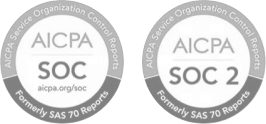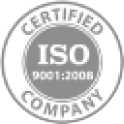ATS
Article Navigation
ATS stands for Applicant Tracking System, a type of software used by recruiters and HR teams to manage the entire hiring process from job posting to final selection. An ATS centralizes candidate data, automates routine tasks, and makes it easier to identify the most suitable applicants quickly. It can parse resumes, store applicant profiles, schedule interviews, and facilitate communication between recruiters and candidates. Modern ATS platforms often include analytics features that track hiring metrics such as time to fill and source effectiveness. The goal of an ATS is to improve efficiency, enhance the candidate experience, and ensure a consistent, compliant hiring process.
Applicant Tracking System (ATS)
An Applicant Tracking System is a comprehensive recruitment management tool that helps organizations organize and streamline their hiring workflows. It allows HR teams to post jobs to multiple boards, receive and sort applications, and collaborate internally on candidate evaluations. ATS platforms can automatically filter resumes based on predefined criteria such as skills, experience, or keywords, saving recruiters significant time in the screening process.
Key functions of an ATS include:
- Job Posting – Distributing openings to career sites, job boards, and social media.
- Resume Parsing – Extracting and organizing candidate information from resumes into searchable profiles.
- Workflow Management – Moving candidates through stages such as application review, interview, and offer.
- Reporting and Analytics – Tracking recruitment metrics to measure performance and optimize processes.
Many modern ATS solutions integrate with other HR systems such as payroll, onboarding, and performance management tools, creating a seamless experience from hire to retire.
ATS Software
ATS software refers specifically to the technology platform used to implement the functionality of an applicant tracking system. It can be cloud-based, which allows recruiters and hiring managers to access it from anywhere, or installed on-premises within the company’s infrastructure. Cloud-based ATS software often includes automatic updates, scalability, and integration options with other HR technologies.
Benefits of ATS software include:
- Efficiency – Automation reduces the time spent on repetitive tasks such as resume screening or sending status updates.
- Collaboration – Team members can share notes, feedback, and candidate ratings in real time.
- Compliance – Built-in features can help ensure hiring practices comply with equal employment opportunity laws and other relevant regulations.
Well-designed ATS software also enhances the candidate experience by making application processes smoother and communication faster.
Applicant Tracking Technology
Applicant tracking technology is the broader category that includes the tools, methods, and algorithms used in applicant tracking systems. This encompasses resume parsing engines, machine learning algorithms for candidate matching, automated email and scheduling tools, and analytics dashboards.
Modern applicant tracking technology often uses artificial intelligence to identify top candidates, predict hiring needs, and remove bias in job descriptions and candidate evaluations. It also enables mobile-friendly applications, video interview capabilities, and integration with background check services. This technology is not only about storing candidate data but also about optimizing the hiring process to be faster, more data-driven, and more inclusive.
Recruitment Management System
A recruitment management system is a larger category of software that manages all aspects of recruiting, of which an ATS is often a central part. While an ATS focuses primarily on tracking candidates, a recruitment management system may also handle workforce planning, talent pooling, employer branding, and recruitment marketing.
Features of a recruitment management system can include:
- Talent Pipeline Management – Building and maintaining a database of potential candidates for future roles.
- Candidate Relationship Management – Engaging with candidates over time to maintain interest in the organization.
- Integration with HRIS – Connecting recruitment activities with the broader human resources information system for smooth data transfer.
By incorporating ATS capabilities along with additional recruitment tools, a recruitment management system supports a more strategic, long-term approach to talent acquisition.
Hiring Software
Hiring software is an umbrella term for any technology solution that supports the process of attracting, evaluating, and hiring employees. It can include ATS platforms, recruitment management systems, onboarding tools, and video interview software. The goal of hiring software is to improve recruitment efficiency, enhance collaboration among hiring teams, and deliver a better experience for candidates.
Examples of what hiring software can do include posting job ads across multiple channels, managing candidate communications, storing applicant data, and generating reports on recruitment performance. Advanced hiring software solutions may also incorporate skills assessments, gamified testing, and predictive analytics to identify candidates most likely to succeed in the role.
For HR and payroll teams, hiring software also ensures that once a candidate accepts an offer, their information can be smoothly transferred into payroll systems and employee records, reducing errors and administrative workload.































 Back
Back